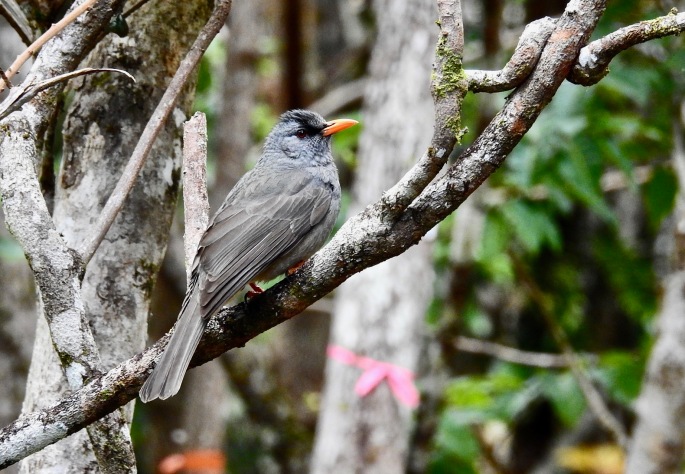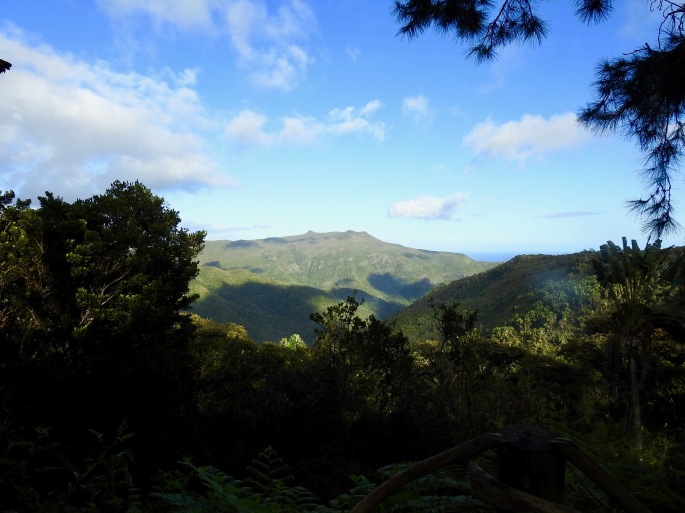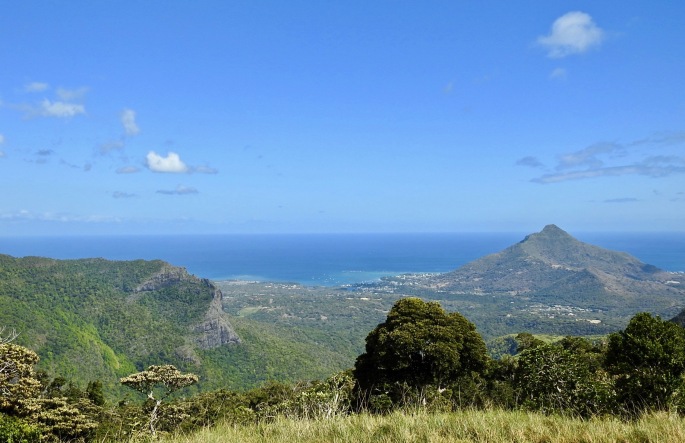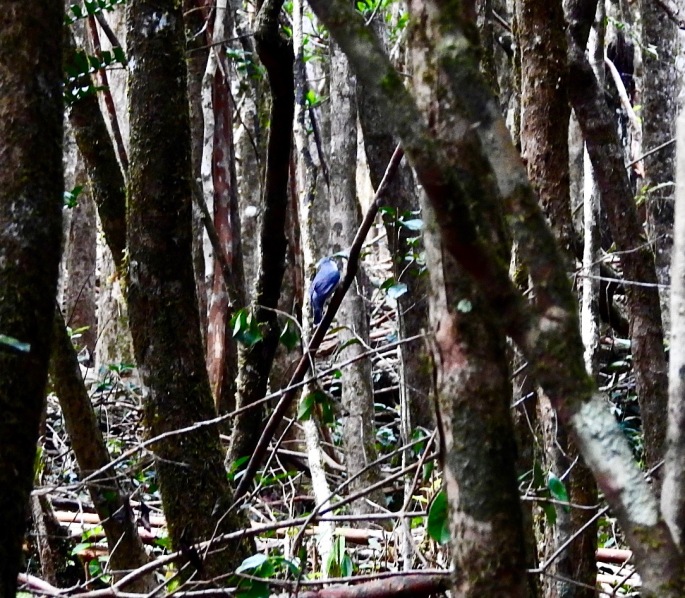

I was up and out before the first towel hit the sun loungers on September 10th for a visit to the Black River Gorges National Park.
The Mauritius Flying Foxes hadn’t gone to bed yet as I met up with the taxi that drove me up into the hills to Petrin on the edge of this superb forest reserve, about half an hour away, up slopes through dozing villages until the Sugar Cane petered out and the forest began.
Temperatures were a bit lower up here, but it was still warm and Rose Marie from the Mauritian Wildlife Foundation was waiting for me as we pulled up at 7.30am.
I’d hired her as a guide for five hours to aid my hunt for endemics.

There she is, a mine of information and great company for the morning as we walked along the Macchabee Ridge Trail, where the forest fell away down steep ridges on either side of the wide trail and Mascarene Swiftlets zoomed pat at eye level in the cooler mountain air – this was the only place I encountered this species during our visit.
Constantly mimicking Mauritius Cuckooshrike as we walked along, in the hope of luring one out, Rose Marie explained about the conservation work that takes place on the island, inbetween making slightly disconcerting “kakakaKAAA” noises.
It wasn’t long before we bumped into an Echo Parakeet – we saw a dozen or more of these endemics during the morning.
In 1986 there were only about ten left, and their return mainly in the Black River Gorges to a population of about 500 individuals is one of Mauritius’ conservation triumphs.
The black bill of the females, less piercing call and wider, scruffier tails all helps separate them from Rose-Ringed (Ringed-Necked in old money), which are present here too.


Seemed to be a much more emerald green too, with a different flight action.
Several Mauritius Bulbuls fed in the trees on either side of the track, and didn’t seem phased by our presence.
This endemic was under threat in the 1970s as well, but the population is now estimated to be about 2,000 birds.

The skies clouded over a bit, which seemed to shut down much of the bird activity as is often the case in rainforests the world over, but it was pleasant enough walking along with Rose Marie, taking the views as White Tailed Tropicbirds wafted around the steep ravines and Crab Eating Macaques coughed and chuntered from the undergrowth.





Just like our ongoing battle with Sea Buckthorn in the dune system at home, the Government’s National Parks and Conservation Service, who manage the site, is forever battling Strawberry Guava and other alien invasives here, which chokes the forest, engulfing the open floor.
In a national park of humid forest, covering about 70km, that’s a lot of strimming.
But given the island only has about four per cent of its original forest left, it’s pretty important that it’s looked after.
Sunnier spells revealed my first Pink Pigeon flying up one of the slopes and disappearing into the canopy and a basking Blue Tailed Day Gecko (Phelsuma cepediana), but my mind was really on a certain Kestrel that lurks in the forest here…

We reached the end of the trail and an observation point with dramatic views down to the west coast, where two of the deepest gorges meet – this is the best site for Mauritius Kestrel in Black River Gorges apparently, but they weren’t playing today.

Rose Marie explained they have got harder to see here, and are rarely encountered now.
It didn’t help that we paused to look at a dead gecko – probably dropped by a Mauritius Kestrel – as we turned and headed back down the ridge.
Sensing my disappointment, she did what any self-respecting guide would do and offered a prayer up to “the great guy in the sky”, asking that Mr Dempsey, not her, would see a Mauritius Kestrel, not necessarily today (good escape clause Rose Marie), but at some point during our holiday.
Given that the Pope had only visited Mauritius the day before, it may not have been such a bad strategy.
I liked Rose Marie – it’s the first time a guide has ever prayed to get me a tick!

Still calling away like a Mauritius Cuckooshrike, Rose Marie scored about halfway back, when a male cuckooshrike responded and we sneaked into the forest to get great views of this declining endemic as it peered at us through the branches.
I managed a blurry snap through the tangle of trunks.

Blue grey with whiter underparts it was a stonker, and after a few minutes was joined by a female, rich chestnut and russet and looking more like a new world antshrike than a cuckooshrike.
Less than 400 of these critters remain now.
The forest had produced a few good birds, but as we neared the end of the trail, we detoured to a feeding area for Pink Pigeons, where three of these, well, pink birds, were coming in to feeders.


An intensive rescue programme since the population plummetted to just nine individuals in 1990 has seen numbers rise to more than 400 now, and I was to bump into the bizarre looking beast at two other sites later in the holiday.
Like most of the other threatened endemics on Mauritius, all of these things have colour rings galore.
In fact as a rule of thumb, if you see any bird on Mauritius with lots of colour rings, it’ll probably be a rare.
Unless it’s a lost racing pigeon of course.
It was a pleasure to be shown around Black River Gorges by such an affable and expert guide – the place is probably easy enough to bird on your own, but I doubt I’d have enjoyed it half as much AND I can’t call like a cuckooshrike.
Thanks again Rose Marie.

